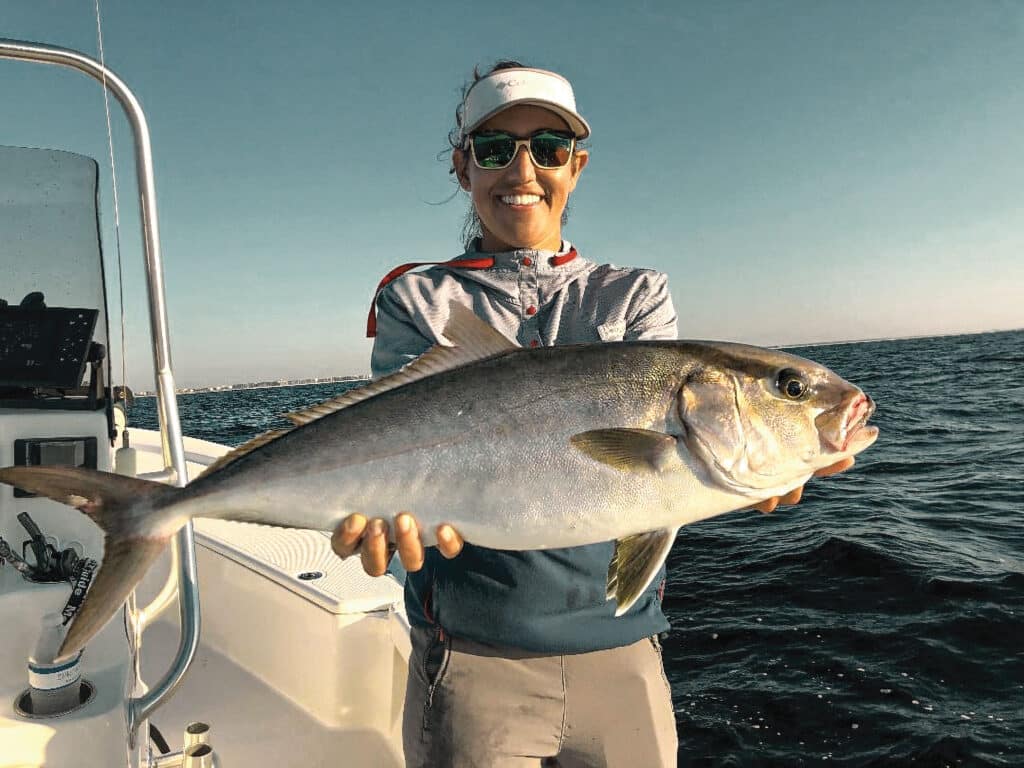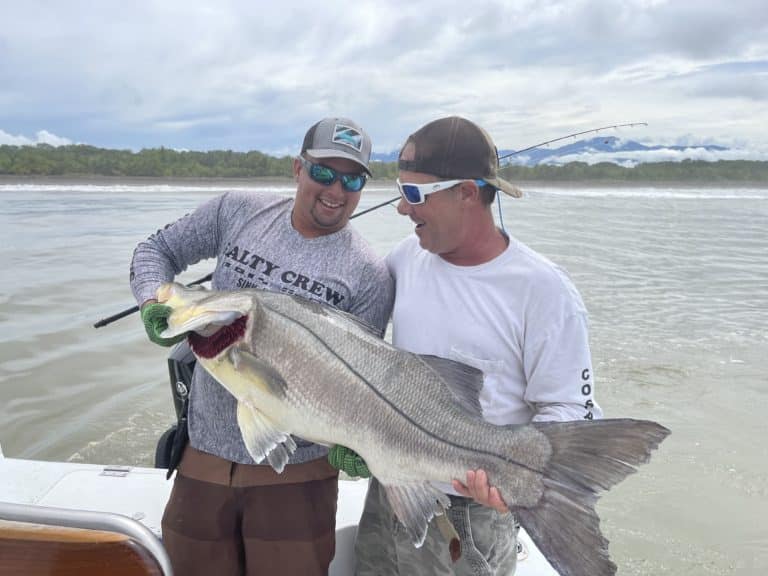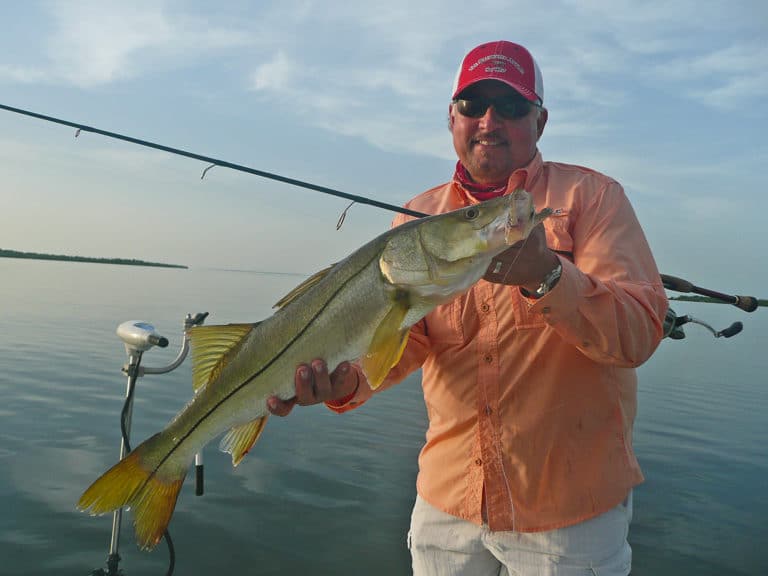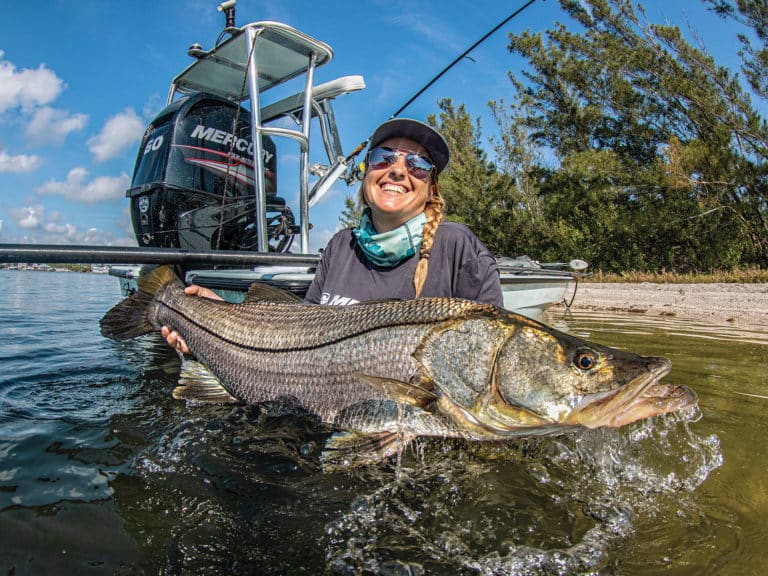
Five Gamefish That Are Tough to Fight Around Structure
The five fish mostly likely to break you off, and how to keep that from happening.
Though always challenging, anglers successfully target snook with light casting tackle.

The five fish mostly likely to break you off, and how to keep that from happening.

Snook records keep falling, with entries from both the Atlantic and Pacific oceans.

Seagrass loss prompts emergency snook closure from September through December.

When water temperatures drop, snook and seatrout migrate from skinny-water open flats to deeper holes in creeks and rivers.
A top game fish of the tropics, snook are unmistakable with their streamlined silvery bodies and the distinctive and prominent black side-stripe running the length of the body. Among the 10 species of genus Centropomus, most are negligible due to small size and rarity. When anglers speak of snook, it’s generally the Atlantic snook familiar to Florida fishermen and the Black or White snook in the Pacific, from Mexico to Panama. They’re commonly caught along mangrove shorelines, river mouths, from the surf, or in coastal channels and passes.
Snook are particularly susceptible to temperature, and may go increasingly sluggish as water temperatures drop below their 68-degree threshold. Though always challenging, anglers successfully target snook with light casting tackle with a complete range of live, dead and artificial baits, or drifting, or trolling lipped or swimming plugs. As they’re subject to extreme angler enthusiasm, seasons and bag and size limits are strictly regulated throughout their U.S. range. Their white, mild flesh has excellent food value.